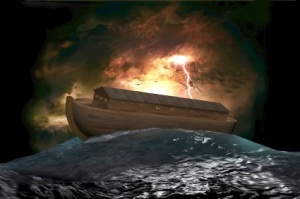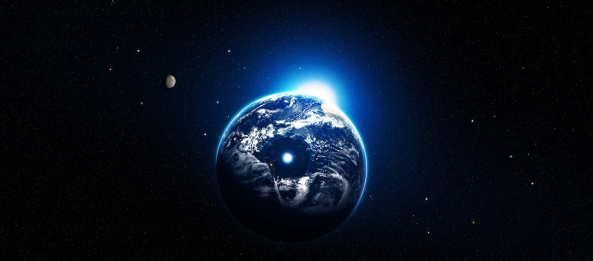These are the precursors to the events which eventually lead to the great floods, that affected the whole planet.
The Sumerians left behind legends about the gods and their early settlement as told in the “Barton Tablets”. These according to Christian O’brian “The Genius of the Few”, tell of a land “of the gods” which at one time became frozen and cold, and eventually forced them south. I consider these myths about the Sumerian “gods” to be ancient recollections of very early events remembered for millenniums, that actually happened to the ancestors of the Sumerians, about their old homelands in the frozen land areas like Siberia. They called this place “Karsag”. I believe that this freezing was caused by the shift in the North Pole 13,000 years ago, which plunged Central Siberia from a temperate climate to a polar climate, where the ground a few feet from the surface never thaws out. Scientists have found frozen mammoths in Siberia, whose stomachs were still filled with plants that are known to live only in temperate climates, and not in the arctic regions.
Some groups trapped in this new harsh climate after the pole shift were so decimated by the freezing Siberian weather that they probably reverted to a primitive subsistence, which they could never hope to recover from in their new harsh surroundings. The lucky ones further away were able to move and look for new lands in more favorable climate, such as the great southern lakes like the Black Sea, Caspean Sea, Lake Baikal areas.
Similar stories are also told by the Californian Indians of the Penuitan language group, who are believed by some linguists to be descendant of the Ob-Ugrians of North Western Siberia, who are a branch of the FinnoUgrian language group. The ancestors of these Penuitan Indians crossed the Berring Straights and traveled here from the north. These Indians also believe that their gods come from and live in the polar regions. Their language has many common words with Ugrian and FinnUgor languages to which Finnish, Hungarian, Estonian, Lappish, Samoyedic, and several other minority languages of Russia belong. The language group is scattered from the Pacific to central and northern Europe.
Historic linguists also claim that the ancestors of the early Iranians also lived in close proximity to the Ugrians (Hungarians, Vogul and Ostjak languages), based on some common early words. According to ancient Hungarian legends there was an intermarriage with the Iranic Alan people. It is no surprise then that Iranian myths also talk of the freezing north in ancient times. This is an excerp from the Avesta of the ancient Persians: “…At that time Airyana Vaejo had a pleasant climate, with 7 months of summer and only 5 months of winter. The forests were rich with game and the fields with grains. In the valleys many brooks flowed. This land however turned into a cursed land, where for 10 months it was winter and only 2 months was it summer, following the attacks of Ahra-Majnyu (the evil-devil).” This land could not have been Europe, since prior to the pole shift most of Europe was under ice or very cold, and only afterwards did it warm up.
The implications and consequences of a climate change of such magnitude must have had a tremendous effect, causing the decimation of populations in areas plunged into the arctic, due to the dying of plants and animals and the initial loss of food supply. It also caused the subsequent changes in a way of living and the great migrations away from a once hospitable original homeland for those that could still manage to escape. The initial places for this maximum climate change would have been in central Siberia, around 100 degree East longitude but it affected much of the north also. It is believed that the early FinnUgor nations during the Ice Age lived in what today is the Ukraine and as the ice receeded many of them moved north to scandinavia. A branch of them however then started moving east and crossed the northern part of the Ural mountains and spread all around it. Others mingling with the local indegenous people of the north east, such as the Samoyeds and others navigated much of the arctic and crossed into north America. Portions settled in the western states and California and are called the Penuitan language family. Special branches went further south into Yucatan and became the Maya indians. In the early phases these all had sizable ethnic elements which included the original north European caucasian types, not just the later mixed Siberian types.
The time after the ice age was fairly warm even in the northern areas from 7300 to 5300BC it was hot and dry. Around 5,500BC another kind of catastrophy occurred. The flooding of the Black Sea . This was the “great flood”, as told by Sumerian legend, which was borrowed by later civilizations of early Mesopotamia and was eventually written down in the Bible. Those who were able to escape this flood fled from this once fertile lowlands, into Eastern Europe but the majority headed toward the warm climate of the south, to Mesopotamia. They founded the first recorded civilization of mankind, whose literature actually survived. Then from 5300 to 3000BC, following the Black Sea flood, it was wet and warm and is known as the W�rm period. After this it started to get continuously cold again in the north. Some groups trapped in this new harsh climate were so decimated by the freezing Siberian weather that they probably reverted to a primitive life style, which they could never hope to recover from in their new harsh surroundings.
Searching for Noah’s flood on the bottom of the Black Sea.
 The flooding of the Black Sea and the Caspean Sea occured around 5,500BC and affected mainly the north shore of the sea. The rising water levels in the Mediterranean and the connected Sea of Marmara next to modern Turkey, caused growing pressure on the earth’s crust in a highly earthquake active region. This may have triggered major earth quakes and perhaps even some volcanic eruptions. This could have weakened or even lowered the earthen barrier between the Sea of Marmara and the Black Sea. Once this wall was breached, a huge waterfall, bigger than 40 Niagara Falls, started filling the much lower Black Sea basin, causing the destruction of the ancient civilization located there.
The flooding of the Black Sea and the Caspean Sea occured around 5,500BC and affected mainly the north shore of the sea. The rising water levels in the Mediterranean and the connected Sea of Marmara next to modern Turkey, caused growing pressure on the earth’s crust in a highly earthquake active region. This may have triggered major earth quakes and perhaps even some volcanic eruptions. This could have weakened or even lowered the earthen barrier between the Sea of Marmara and the Black Sea. Once this wall was breached, a huge waterfall, bigger than 40 Niagara Falls, started filling the much lower Black Sea basin, causing the destruction of the ancient civilization located there.
This was the “great flood”, as told by Sumerian legend, which was borrowed by later civilizations of early Mesopotamia and was eventually written down in the Bible. Those who were able to escape this flood fled from this once fertile lowlands, into Eastern Europe but the majority headed toward the warm climate of the southern Mesopotamia. They founded the first civilization of mankind whose literature actually survived and is understood today. The Babylonian version of the flood goes into some detail about the fiery nature of the flood, which shook the ground and blackened the skies, along with the great flooding of the lowlands.

